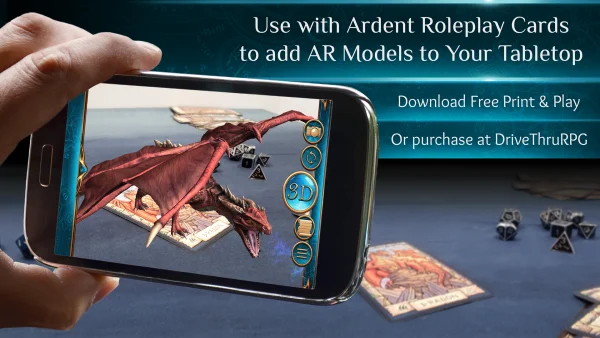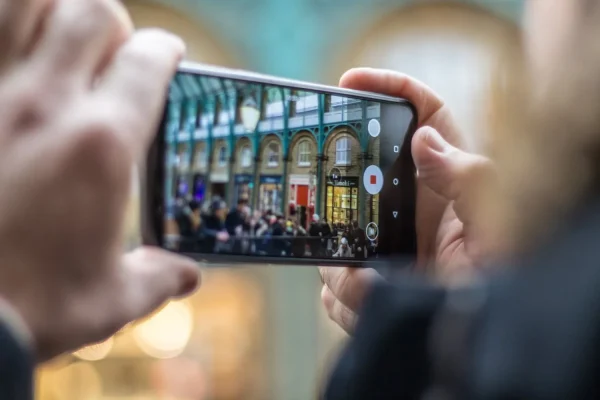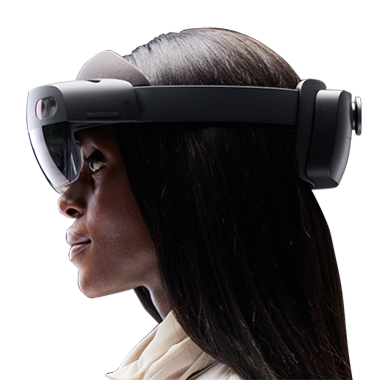Hey folks! There’s a technology that’s been touted as one of the ‘next big things’ in Tabletop RPGs: Augmented Reality. Today we’ll be looking at the technology, and determining whether it is a helpful tool for your tabletop games, or simply a flashy gimmick.
What is Augmented Reality?
Augmented Reality, or AR for short, is a technology that allows you to overlay images and information over the real world. This is typically done using a device with both a screen and a camera, such as a smartphone. The most common example of AR that most people would be familiar with is Pokémon Go. Those who have played would be well aware of the ability to place Pokémon you’ve captured into your physical space using your phone camera.
There’s a few different flavours of AR based on the activation method. We’ll cover the two major ones below.
Image/Marker based
Image-based or Marker-based AR detects a known image and uses it as the (0,0) coordinate. As the image is tracked, the content that is attached to that image will follow it around. You can see a fine example of this in Ardent Roleplay‘s AR cards.

In the above image, the dragon is anchored to the card and will move as you move the card around. This can provide a neat way to visualise your 3D scenes in AR. The digital aspect also allows for animation. Dragons can flap their wings, smoke can come out of chimneys, and trees can sway in the breeze.
World-space/SLAM

The other major type of Augmented Reality is world-space AR. This is the Pokemon Go style of augmented reality. You don’t need any kind of existing image for this one – your device creates an internal map of your surroundings using SLAM (Simultaneous Location and Mapping). You do need a ‘visually interesting’ surface for this AR tech to work, as SLAM uses the camera and parallax to determine distance. If a surface is a solid colour, there’s no parallax and therefore no mapping. This type of AR can be a bit more versatile, as you can place content anywhere in the world rather than on pre-made cards or images, but positioning things exactly where you want them can be trickier due to sensor drift.
There’s one major problem with both of these types of Augmented Reality when it comes to tabletop though. It’s visible in both of the above images, so I’ll give you a bit of time to try and spot it.
What’s wrong with AR in Tabletop?
Did you spot it? That’s right, it’s the phone!
Right now, the majority of consumer Augmented Reality technology requires a phone or tablet. This is good for short experiences, but for TTRPGs this is a major setback for a few reasons:
You need to hold up your phone

A typical tabletop session lasts a minimum of 3 – 4 hours. This means that if you’re using AR, you’ll need to continually hold your device up to view image markers. This can be quite energy intensive, and is not accessibility friendly. You could potentially use a phone stand, but that’s another thing that takes up space at the table.
Power requirements

As Augmented Reality requires a camera to sense the world. Cameras cost a lot of power to run. This puts a huge power requirement on any AR tools. Depending on how intensive other parts of the app are, an AR app can drain a phone battery in anywhere from 1 to 3 hours. With a typical tabletop session a minimum of 3 hours, this isn’t a feasible avenue.
Overheating

Large power usage has an unfortunate side effect; heat. A lot of low to mid-range phones can very easily overheat with the amount of power that AR requires. Even some high-end ones can start to sweat if you’re doing some intense graphics. This can limit augmented reality apps to only the highest-end phones and tablets, which can easily set you back over $1000.
Could Augmented Reality ever be useful at the table?
Thank you for asking! Handheld devices are likely never going to be practical for use with TTRPGs, but there’s one category of AR device that we haven’t covered here yet:
Wearable AR

Wearable AR is an emerging technology that hasn’t quite made it to the consumer level yet, with a decent headset costing multiple thousands of dollars. We do know that Apple has been working on their own wearable AR headset for a few years now, and once that comes out it’ll likely be the first truly feasible solution for TTRPGs.
We would like to give a shout out to Tilt Five here, who are by far the closest to an augmented reality solution that can actually work for tabletop games. They have a unique solution that uses a wearable headset combined with a retro-reflective game mat to display their images. It has the slight issue that you can only see things that are overlaid on the game mat. If you have things coming too far off the mat, you could be limited by angles. Despite this limitation, they have solved most of the issues that Tabletop AR faces.
The verdict
At this stage, Augmented Reality for Tabletop Roleplaying is strongly in the ‘gimmick’ category. It requires very expensive hardware to run lest it overheat your device, and even when running it requires physical effort to actually use. Once we have a consumer-level wearable AR headset, we’ll start to see actually useful AR tools at our tables.
If you want to view 3D scenes that all of your players can easily access, consider using a TV at your table. You could even turn it into a touch screen!
